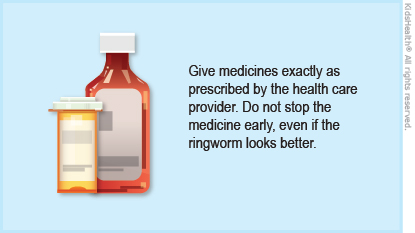Kids with ringworm on the scalp have one or more scaly patches. Ringworm is caused by a type of germ called a fungus (it isn't caused by a worm, but the ring around the rash can look like one). It can spread to other people and to other parts of the body.
Ringworm of the scalp is treated with a prescription medicine taken by mouth. It takes up to 3 months of treatment for ringworm to go away. Hair loss often happens in the ringworm patches, but it usually grows back after treatment.




How do you get ringworm of the scalp? Some people get it from using a brush, towel, hat, or helmet from someone who is infected. You can also get it from touching ringworm on someone else's head or body.
What is a kerion? A kerion is when swelling, irritation, and pus develop in the scalp ringworm patch. It usually gets better with the medicine given for ringworm. Sometimes, doctors prescribe another medicine to help reduce the swelling and irritation.
How is ringworm diagnosed? Health care providers usually can diagnose ringworm by looking at it. Sometimes, they send a bit of the scaly skin to the lab to check for the fungus.
How can I prevent my child from getting ringworm again? First, make sure your child takes all the medicine exactly as directed so the ringworm doesn't come back. Ringworm can happen on the head or body. To prevent all forms of ringworm, teach your child to: